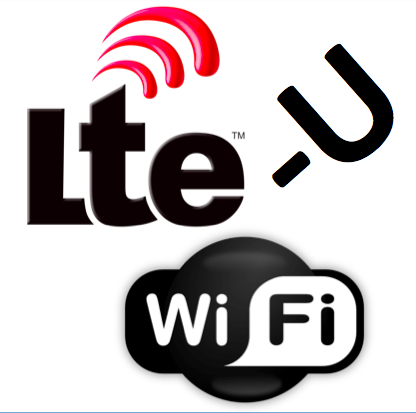
Controversy has raged for well over a year now over plans by some mobile network operators (MNOs) to extend their spectrum into unlicensed 5GHz bands currently occupied by Wi-Fi. The arguments have been both commercial and technical, centering on the rights of MNOs to compete with established Wi-Fi networks and at the same time the efficiency or fairness of mechanisms for coexistence between the two.
LTE-U enables 4G/LTE cellular services to be extended into the 5GHz unlicensed bands, which is obviously attractive for MNOs because it gives extra precious spectrum without having to pay for it while making it easier to support high bandwidth applications like premium live video streaming. But the initiative, initially proposed by Qualcomm and Ericsson, has gained some traction within the 3rd Generation Partnership Project (3GPP) primarily because many MNOs want to gain full control of heterogeneous networks combining licensed and unlicensed spectrum, so there is a major commercial force here.
MNOs have expressed frustration over Wi-Fi offload, which is necessary to avoid overload on their networks and give their subscribers the best quality experience, but means they have less control over end-to-end traffic. Not surprisingly though those Telcos with extensive Wi-Fi hot spot networks take a different line and are opposed to LTE-U. Therefore we find that operators like AT&T and BT with huge investment in Wi-Fi hotspots but smaller presence in cellular are opposed to LTE-U. On the other hand Telcos that have not bet so much on Wi-Fi but have major cellular operations now support LTE-U, including big hitters like Verizon, China Mobile, NTT DoCoMo, Deutsche Telekom and TeliaSonera.
Notably though some of the world’s biggest providers of mobile services are ambivalent about LTE-U, which some of them see as complicating rather than simplifying the drive towards heterogeneous services combining licensed and unlicensed spectrum. The view there is that Wi-Fi is best placed to occupy the unlicensed spectrum with a lot of momentum and investment behind it. The LTE-U camp counter that the technology can carry twice as much data as Wi-Fi in a given amount of 5 GHz spectrum through use of carrier aggregation via LTE-LAA. This was already defined in the LTE standards and enables multiple individual RF carrier frequencies, either in the same or different frequency bands, to be combined to provide a higher overall bit rate.
This may be true as far as it goes but is largely irrelevant for users wanting to access broadband services in their homes or public hot spots, according to the Wi-Fi community, a view shared by some MNOs as well. Birdstep, a leading Swedish based provider of smart mobile data products enabling heterogeneous services combining cellular and Wi-Fi, argues that the story is not just about the wireless domain itself but also the backhaul infrastructures behind it. Any spectral efficiency advantage offered by LTE-U would be more than cancelled out by inherent inefficiencies in the backhaul. By offering access to the world’s broadband infrastructures Wi-Fi offers greater overall scale and redundancy.
Another Wi-Fi specialist, Turkey based AirTies, contends that LTE-U is just a spectrum grabbing bid by MNOs and should be resisted. Air Ties has developed mesh and routing technologies designed to overcome the problems encountered by Wi-Fi in the real world and these are only going to get worse as unlicensed spectrum reaches even higher frequencies. The next generation of Wi-Fi based on the emerging IEEE 802.11ad standard will run in the much higher frequency band of 60 GHz, which will potentially yield a lot more capacity and performance but increase susceptibility to physical obstacles and interference. It will only work with further developments in the sort of intelligent beam forming, meshing and steering technologies that AirTies has invested in.
It is true that LTE-U proponents have worked hard to mitigate any impact of coexistence with LTE-U on Wi-Fi. In Europe and also Japan they were forced to do so anyway by regulations that required LTE-U to adhere to similar rules over fair access to spectrum as Wi-Fi. These rules insist on incorporation of LBT (Listen Before Talk) into LTE-U, a mechanism originally developed for fixed line Ethernet networks where there was a shared collision domain (it was called Carrier Sense Multiple Access or CSMA). Stakeholders that are not in favor of rapid LTE-U deployment point out that in the old Ethernet days before 10BaseT/switching, CSMA proved inefficient when there were to many devices trying to get onto the same collision domain. Total capacity could drop drastically and this issue could be reborn into the wireless world.
The European Union specified two options for LBT, one the scheme called DCF/EDCA already adopted for Wi-Fi standards and a newer scheme known as Load Base Equipment (LBE), differing in the procedure for backing off when detecting traffic in a given channel.
Naturally enough there has been an assumption in the LTE-U camp that any deployments will be safe if they do adhere to the EU’s LBE LBT standard. But this assumption has recently been challenged by CableLabs in a simulation modeling a million transmission attempts on sets of nodes following the EU LBE LBT rules. The EU LBE turned out to scale badly with increased numbers of devices, with growing numbers of collisions. This will only amplify concerns expressed by broadcasters such as Sky, as well as by some major vendors like Cisco with feet in both the Wi-Fi and LTE camps, that LTE-U poses a threat to quality of service for premium video especially.
There are no signs yet of the LTE-U camp giving up on their efforts to infiltrate the 5 GHz domain, arguing correctly that by definition unlicensed spectrum is free for all and cannot be owned by any one wireless technology. But there is a strong case for holding off from LTE-U deployments until further extensive tests and simulations have been carried out to assess the impact on capacity and QoS in real life situations.
